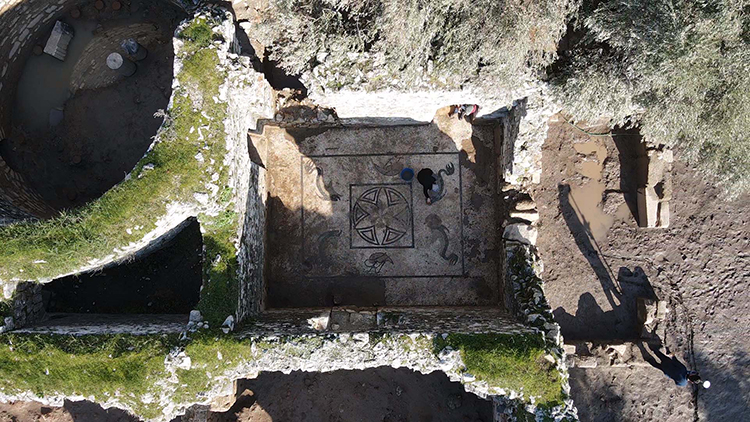
The mosaics that were uncovered on the floor of the Roman bath, which had been used as a barn by the villagers for years
In the ancient city of Herakleia, located in the Milas district of Muğla, an important coastal city in Türkiye, mosaics depicting crocodiles, dolphins, flamingos, and eels have been uncovered on the floor of a Roman bath that had been used as a barn by villagers for many years.
Herakleia was an important center of trade and culture in ancient times, situated on the shores of the Latmos Gulf (now known as Lake Bafa), which is an extension of the Aegean Sea.
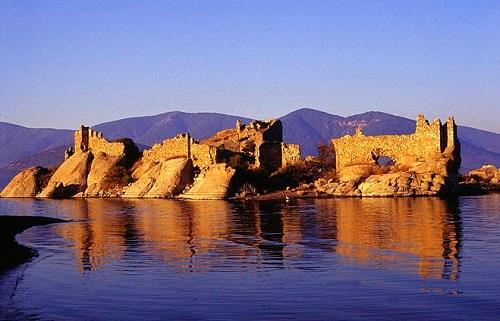
Named after the hero Heracles from Greek mythology, Herakleia lost its former significance in the 1st century BC when it severed its connection with the sea, but it became a refuge for Christian monks. The ancient city, built on a very rugged and rocky terrain, is surrounded by a 6.5-kilometer-long wall reinforced with 65 towers.
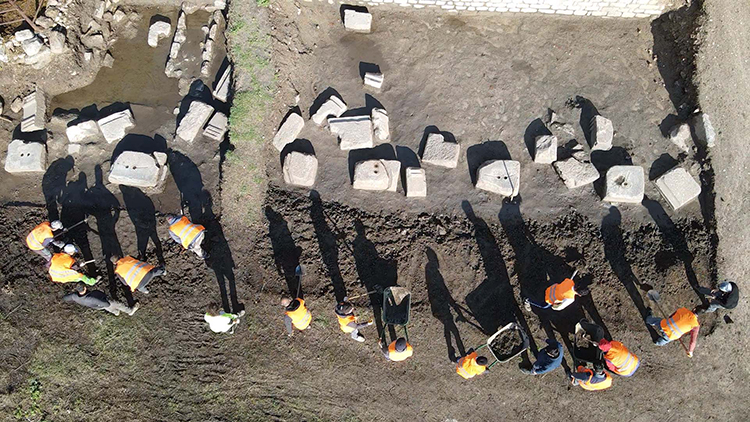
The head of the Latmos and Herakleia excavation, Prof. Dr. Zeliha Gider Büyüközer, a faculty member of the Department of Archaeology at Selçuk University, stated, “We have uncovered the rooms of the bath, which is a structure from the Roman period that is very important for the city, and is almost intact up to the roof level. We excavated more than two meters of fill. We have determined both the functions and the usage phases of these spaces. In this regard, we have obtained very important archaeological data.”
The mosaics found in the “cold” section of the areas excavated by the team, particularly the depictions of crocodiles, are noteworthy.
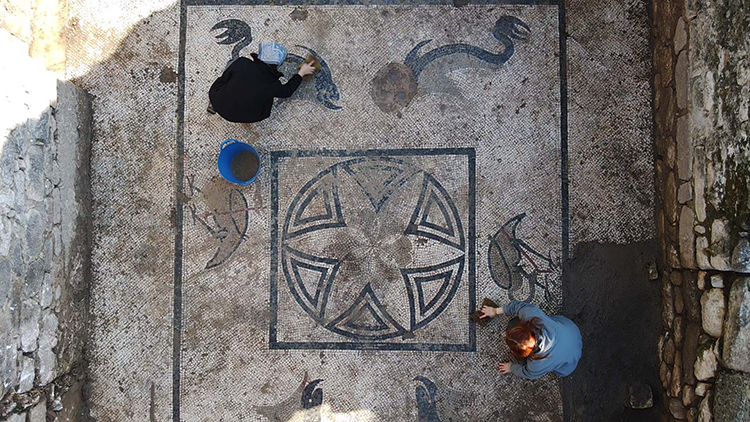
Büyüközer stated, “Six crocodile depictions that are oriented towards each other have been uncovered. This mosaic has attracted considerable interest. Those who see it might think that crocodiles could have lived in this region. However, this area is not very suitable for crocodiles to thrive, but the master who created this mosaic must have seen a crocodile, as he was able to depict it in great detail and transfer it to the mosaic. Therefore, we believe that the craftsman who worked in this space could have been a traveling artisan who may have also worked in regions where such crocodiles lived in previous years.”
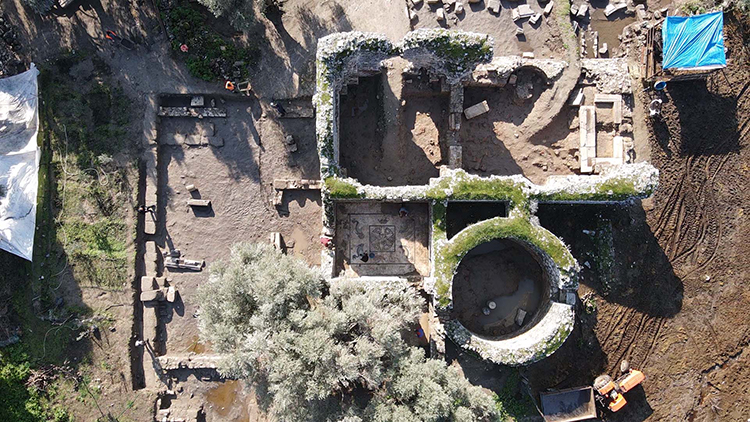
Büyüközer also noted that a well-preserved mosaic floor was uncovered in the warm room, which was built to prevent heat loss in the bath. “Here, there are flamingos among four dolphins placed in the corners, and interestingly, there are eels made of red stones in the mouths of the flamingos. Eels are very important animals for this region. Flamingos are also among the bird species that continue to live in this area today. In fact, the artist depicted the animals he saw in the region.”
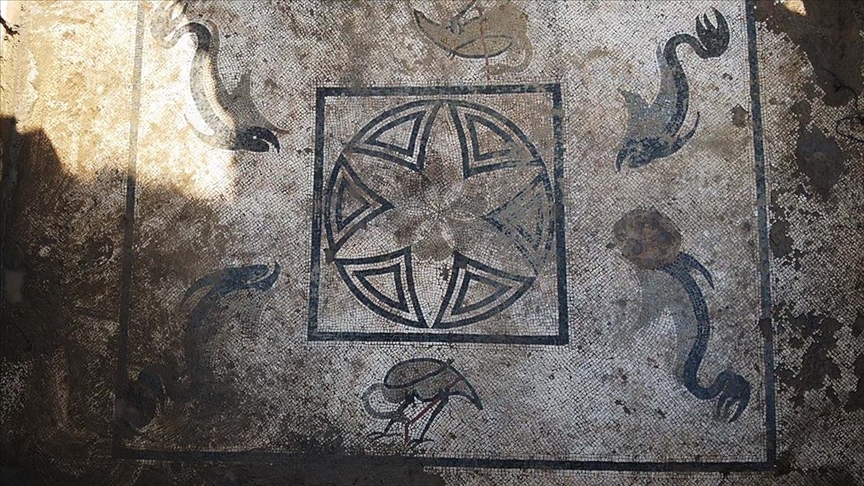
The Roman bath had been used as a barn by villagers.
Büyüközer mentioned, “We know that it was used as a barn for a period. The owners are still alive. In conversations we had with them, we learned that they tied their animals in this space. The side of the bath is still being used as a barn. The mosaics and findings have also attracted a lot of interest from the local people. They say, ‘We never thought of this place like that. We never imagined it this way.’ Many people are coming from the surrounding areas out of curiosity to see these mosaics.”
Cover Photo: Durmuş Genç/Anadolu Agency
You may also like
- A 1700-year-old statue of Pan unearthed during the excavations at Polyeuktos in İstanbul
- The granary was found in the ancient city of Sebaste, founded by the first Roman emperor Augustus
- Donalar Kale Kapı Rock Tomb or Donalar Rock Tomb
- Theater emerges as works continue in ancient city of Perinthos
- Urartian King Argishti’s bronze shield revealed the name of an unknown country
- The religious center of Lycia, the ancient city of Letoon
- Who were the Luwians?
- A new study brings a fresh perspective on the Anatolian origin of the Indo-European languages
- Perhaps the oldest thermal treatment center in the world, which has been in continuous use for 2000 years -Basilica Therma Roman Bath or King’s Daughter-
- The largest synagogue of the ancient world, located in the ancient city of Sardis, is being restored











Leave a Reply